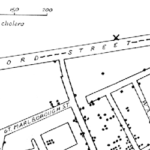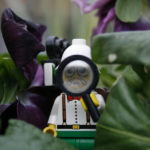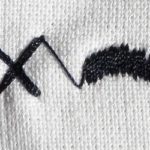Kristen Haberthur
Kristen is a biomedical research scientist by trade with a PhD in Viral Immunology. Enthusiastic science communicator and teacher. Currently adjunct faculty in the Department of Biology at the University of Portland.
Articles by Kristen Haberthur
We explore microscopy for immunologists and bring them into the light and away from the 96-well plate, at least for some of the time.
As bench scientists, we deal primarily with the tangible aspects of biology. The mechanisms and pathways that we try to understand not only allow for us to delve more into how the world works, but can also shed light on disease. However, there is a subject that while distant from traditional bench work, is equally…
Welcome back, fellow flow cytometry friend! I am sure that you are rocking your data acquisition at this point, having perfected your understanding of panel setup, fluorophore usage, and using the flow cytometer of your choice. However, with as many samples as you are running, it is possible that you may be experiencing a little…
Before we go any further, we have to get some things straightened out: RT-PCR versus qPCR versus RT-qPCR. Sooo confusing, amirite?? They all refer to specific molecular biology assays, but the names are unfortunately used interchangeably, which can be awfully confusing for just about anyone. So without further ado: RT-PCR is short for reverse-transcriptase PCR,…
According to Bill Nye, “Science rules!” – and I think most of us would agree. We are learning more and more about the world around us each day, as well as about ourselves. But is there a difference between a Science Fan, and a Scientist? Everyone has their own parameters, but below are some that…
As any good biologist knows, one of the easiest ways to determine if a cell is functionally active is the production and secretion of proteins in response to a stimulus. In many circumstances, the quantity of the secreted protein, and thus the level of cellular activation can be assessed by ELISA. However, if you are…
Pop Quiz Time: You get a new bacterial strain from a culture collection, but you’re not quite sure what the genetic notation (i.e., all the letters and symbols) means. Do you: A. Cry? B. Ask around to see what your lab mates think? C. Cross your fingers that your friends at Bitesize Bio can help…
Hello again, fellow Flow Cytometry Fan! It looks like you have your experiment all planned out, including staining protocols and gating schemes, and are ready to get some paradigm-shifting data. But before we start “plugging-and-chugging” samples through your cytometer of choice, we need to make sure that the nozzle size and sheath pressure are set…
Flow cytometry is fast evolving from a method only revered by immunologists, to one used by nearly every biological specialty. It’s pretty much my favorite tool. Unfortunately, as with most lab techniques, much of flow cytometry is taught on the job without a lot of standards. And too often bad habits are passed along like…
The polymerase chain reaction (PCR) is the backbone of many lab techniques. In short, it allows for the exponential amplification of a specific segment of DNA. Through the use of primers encoding restriction enzyme sites, these amplified fragments are used in downstream cloning procedures, usually leading to the insertion of one, maybe two, PCR fragments…
In this ever-evolving world, scientists in “alternative”, non-academic positions are more commonplace than ever. Gone are the days where ideas of leaving bench science would label you as a “sell-out”. Now there is a push to support every scientist, regardless of their goals. Whatever the reason for this shift in opinion, be it the realization…
Ah, cell counting — it’s the oldest trick in the book! Well, not really, but people have been developing methods for counting cells since the late 1800s. It has been around for a while. But what different methodologies are available to biologists now? Well, hold on, because you’re in for a treat! In this article, we…
Fluorescence is one of the most important and useful tools in a biologist’s toolbox. In biology, nearly every field, from physiology to immunology, uses fluorescent molecules (aka fluorophores) to detect proteins. However, the specific science behind how fluorescence works can be confusing or overlooked. Have no fear! In this article, we break down key points of…
Working in a research lab is not a normal job. The hours are often unconventional and the tasks can run from exciting to mundane—it’s a world all of its own. Even so, your loyalty to your field and people is unmatched; there is a level of comradery you experience that is unlike any other. This…
If you’ve been keeping up with our recent series of articles, welcome back! If not, you can catch up on how fluorescence works or what not to do with your flow experiment. In short, we have been discussing fluorescent labels and their role in flow cytometry. Today, I’ll round out our discussion by touching on…
Flow cytometry. Some people love it—most hate it—but all can agree that it is one of the most powerful analytical tools immunologists possess. Here’s a quick refresher: as the name suggests, flow cytometry measures the physical and chemical characteristics of cells. This is accomplished by fluorescently labeling cell surface markers/proteins using antibodies conjugated to fluorophores.…
As science is becoming more interdisciplinary, the tools we use to answer questions are also crossing party lines. Case in point: flow cytometry. Once a tool only used by “real” immunologists, flow cytometry is fast becoming a method by which numerous questions can be answered, from the length of a cell’s telomeres, to the state…
All scientists should be involved in some aspect of outreach. There. I said it. I know, I know. This goes completely against why most scientists pursued their careers in the first place: to dedicate their lives to discovery, and to do so alone. With minimal human interaction, especially with non-scientists. Why You Should Reach Out…
While many scientists are methodical and precise, some of us like to live on the edge. Read a protocol all the way through? No thanks, I’ll take my chances and guess what concentration of HCl I should use. Label my tubes with the correct content? Puh-lease – it’s much more exciting deducing which is which…
One of the key characteristics of cytotoxic cells (i.e. CD8+ T cells, natural killer cells) is the presence of pre-formed cytoplasmic lysosomal granules. These structures house perforin and granzyme; two molecules that are essential for the lysis of target cells. Upon effector cell activation, granules are polarized toward the target cell and the contents are…
Deciding to start a family with your partner is one of the most exhilarating and frightening times you’ll likely ever experience, outside of welcoming the little F1 to the world that is. Your job should not be an inhibitory factor in making that decision. We all know that post-docs live in a purgatory of sorts:…
Stuck in a rut? Here are some useful nuggets you could implement in your day-to-day science life.























